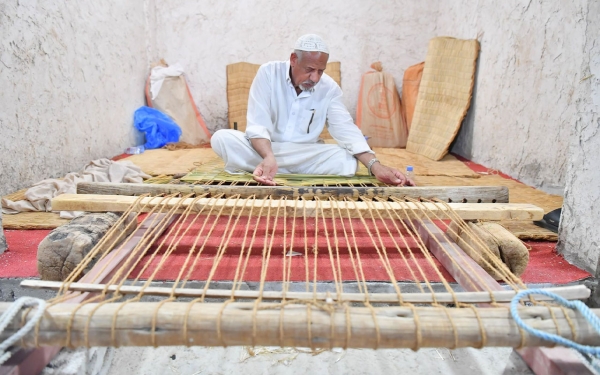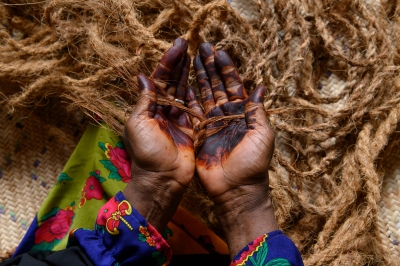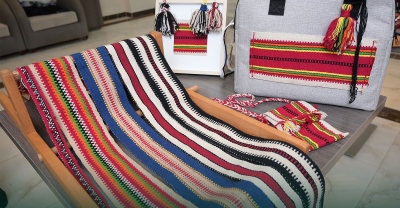

Al-Midad (Floor Mats) Production in the Kingdom of Saudi Arabia is a traditional craft that once was popular in al-Ahsa and al-Qatif Governorates within the Eastern Province. It includes al-Hassir, al-Miga'd, al-Musalla, Maddet ad-Diwan, and Maddet al-Hubus, which were used to cover the floors in homes and mosques.
Al-Midad making and uses in Saudi Arabia
The sizes of al-Midad vary according to their intended use. Some are for sleeping, others for mosque floors, and still others for al-Hubus, which are raised platforms at the entrance of houses. This craft did not provide a substantial income for artisans; thus, many supplemented their earnings with farming. Craftsmen typically sold their production twice a week: on Thursdays in al-Hufuf and Wednesdays in al-Mubarraz.
The only plant used in the production of al-Midad was the rushes plant (Juncus acutus), which was abundant in al-Ahsa Governorate. However, due to changing environmental conditions, rushes have become increasingly scarce. This plant required large quantities of water and wetlands to thrive. With the depletion of water sources, the rushes plant diminished, forcing artisans to travel to al-Qatif to obtain it.
The price of rushes was not specified; it can only be determined by the seller. In the past, rushes were transported on donkeys in large bundles. Each donkey could carry two bundles for a fee of no more than SAR20. Artisans preferred long and thin stalks as they were more versatile, while shorter stalks were primarily used for mosque mats.
Raw rushes preparation method
In the past, the artisan would go to the seedbeds, cut them like alfalfa, and spread them near the swamp in the sun for twenty days. Their color would change from green to white. Then, the rushes would be bundled and transported to his home to be stored in special warehouses. Every day, the artisan would take out a bundle and a half to work with, soaking the rushes in water, taking the good parts, and discarding the bad.
Making al-Hassir would take about six hours from start to finish, while making al-Midad would take one to two days, depending on its length. The only thing that harmed the rushes plant was locusts, the greatest threat to it, as animals avoided eating it because it was very bitter.
The process of making al-Midad was similar to weaving fabric. The tools for weaving al-Midad consisted of a rope, al-Haf, al-Masdiyyah, al- Mirfa' (lever), az-Zarayer (buttons), al-Habbas (clamp), and al-Mirad (beater), which were used when making al-Midad. This was a profession that one artisan could not do alone; it required three artisans. One artisan would sit to the right of the tool, another to the left, and the third in the middle.
Related quizzes
Related articles

